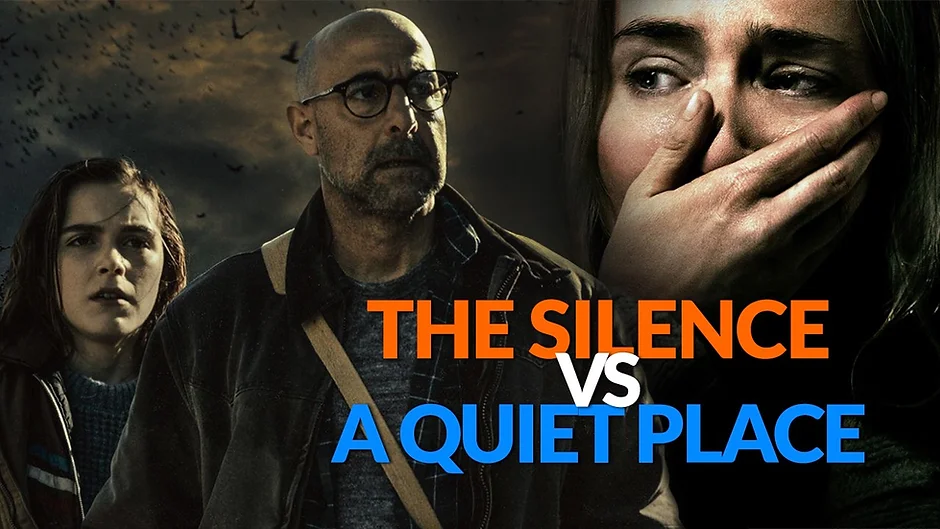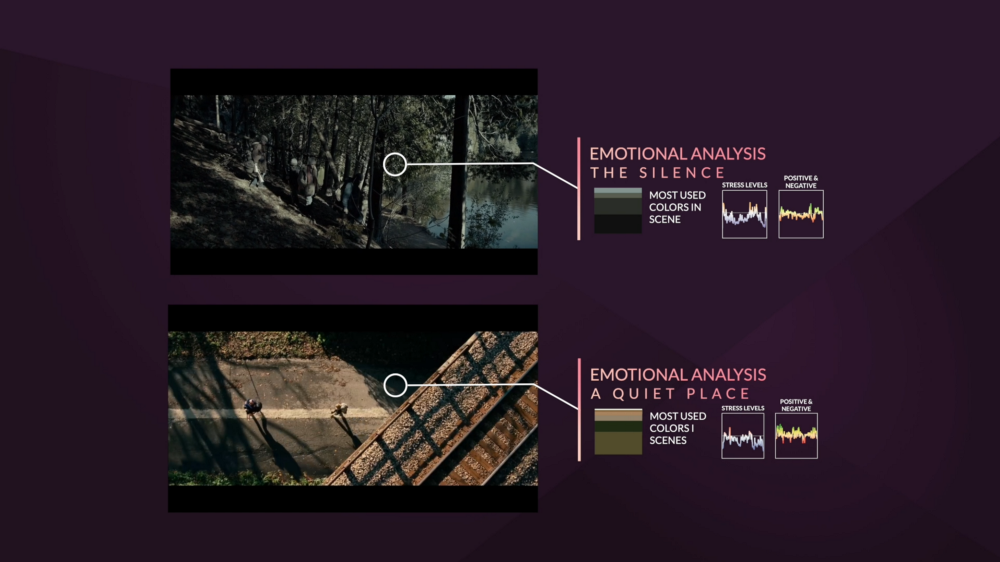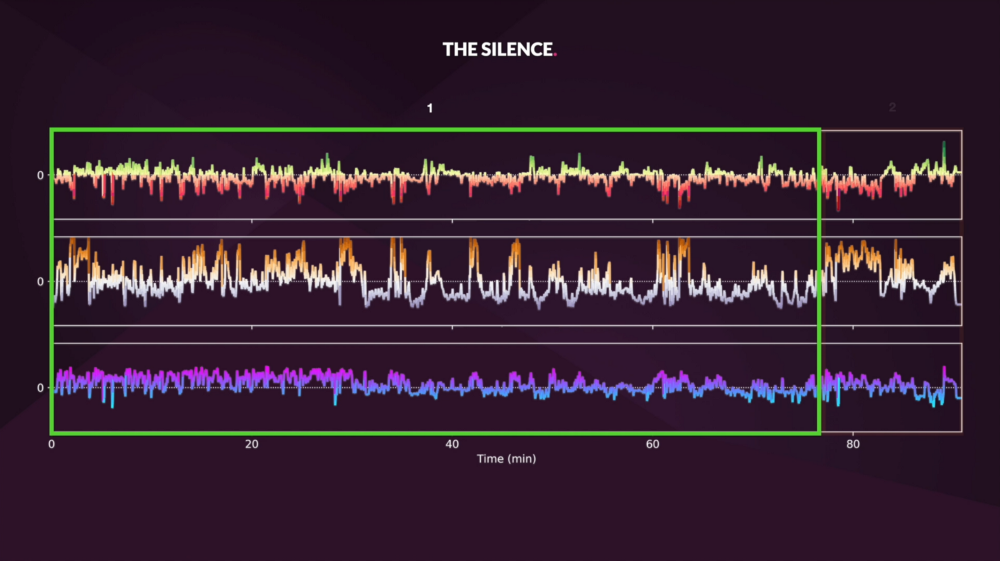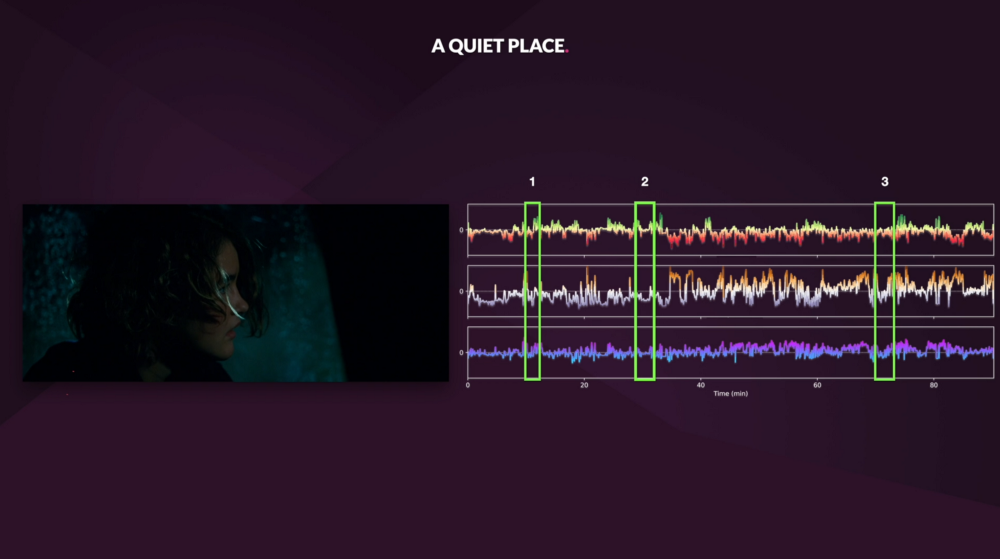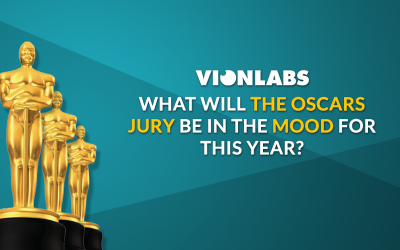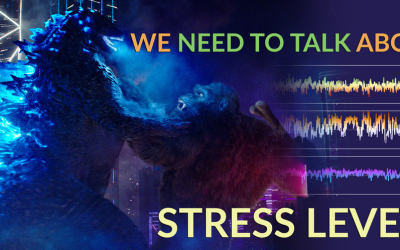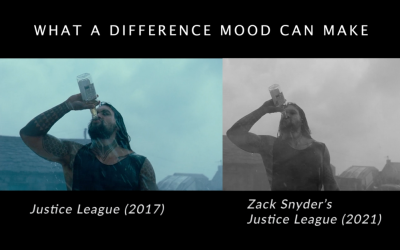For movie enthusiasts across the globe who have seen both movies, the answer to the question posed by the title of this article might be fairly straightforward. No. Kind of? But no.
Vionlabs Emotional Data Analysis for Streaming Services: To present you with content you would like to watch, streaming services today use recommendation algorithms based on traditional metadata. With this (if you are lucky), it’s very likely that if you’ve watched A Quiet Place (Krasinski, 2018) and really enjoyed it, The Silence (Leonetti, 2019) will be recommended to you because of its similar genre and high-level plot. But these two movies will not necessarily have the same emotional impact on the viewer. A movie recommendation like this is bound to make expectations go unmet.
Streaming services today face many challenges. With vast content libraries, viewers struggle to find great content they are in the mood for amidst the increasing overflow of titles presented to them. Because of the current recommendation algorithms used by many services today, the titles being recommended are often misleading and viewer satisfaction will therefore suffer. That is why it’s so important to understand content on a deeper level and use that data to improve the streaming experience.
In this article, we will use Vionlabs’ Emotional Data Analysis to compare two movies that from a traditional metadata perspective are basically the same movie, but as the data will show, are actually quite different. With data like this, services can finally give their viewers what they actually want.
Vionlabs’ Emotional Data Analysis
What is Vionlabs’ Emotional Data Analysis and how can it be used to analyze content? Through machine learning trained on human input, Vionlabs is able to predict people’s reactions to video content. Their system outputs a vast variety of variables such as how stressful a scene is or whether it evokes positive or negative emotions, and this information can be used to determine the emotional impact of a scene. It can also measure things like color, pacing, audio and object recognition.
Why is this important? When streaming services have a deeper understanding of the content in their libraries, they are able to better understand their users and present them with a viewer experience they keep wanting to come back to. One challenge services face today is that viewers often feel the content recommendations they get within a service doesn’t live up to their expectations. If you understand the kind of tension and suspense one movie generates, it would be a shame to pair it up with something that simply fails to build up the same response within the viewer.
Silence To Create Suspense in Horror Movies
One of the greatest tools used to build tension and create an emotional impact in filmmaking is silence. By stripping a scene of sound, a void is created that audience members will have to fill themselves in order to make sense of what is currently happening. Nothing is as scary as your own imagination, and as you’re filling in the blanks, you become more intimately attached to the film.By removing one of our senses from the story, horror filmmakers are able to immerse us by making us hyperaware. We saw this not only in A Quiet Place, but as a trend in several films coming out around the same time. Some of these are Birdbox (Bier, 2018) where monsters kill everything able to see them, or The Silence, which is basically the Netflix version of A Quiet Place, but with a creepy cult subplot.
But if it’s a buildup of tension your viewers are in the mood for, simply looking at the plot alone won’t cut it. For that, it would be more useful to actually analyze the response your content will give your viewers and match accordingly.
A Quiet Place Vs The Silence
One film that really understands how to use silence to build tension is John Krasinski’s A Quiet Place. This world-wide box office success manages to grip the audience by stripping their cinematic world of sound, and by doing so we as viewers are taken on a roller-coaster ride of fear, suspense and imaginary horrors.
As we get deeper into the analysis we will use examples from the movies to illustrate how emotional data can be used. If you do not wish to get any spoilers, please go watch the two films before reading ahead.
Set in a post-apocalyptic world, A Quiet Place is a horror story about a family trying to survive the pervasive threat of extraterrestrial creatures with hypersensitive hearing, attacking anything that makes a loud enough sound. Forced to live as silently as possible, this family has been able to survive for so long because their oldest daughter is deaf and they are able to communicate through sign language. Throughout the story, this family suffers great loss and isolation, as well as the birth of a child, all while doing their best to stay silent.
Now the plot of The Silence doesn’t seem to be much different. In this movie a family is also trying to survive the threat of blood-thirsty creatures ready to snatch them as they make noise. The oldest daughter is also deaf. Looking at it from the surface level, the major difference between these two stories seems to be the setting. When we meet the family in A Quiet Place, it’s clear from the get-go that they have been living their isolated and monster wary lives for quite some time and have grown accustomed to a new lifestyle. In The Silence we get to follow the family as they try to deal with this newfound threat.
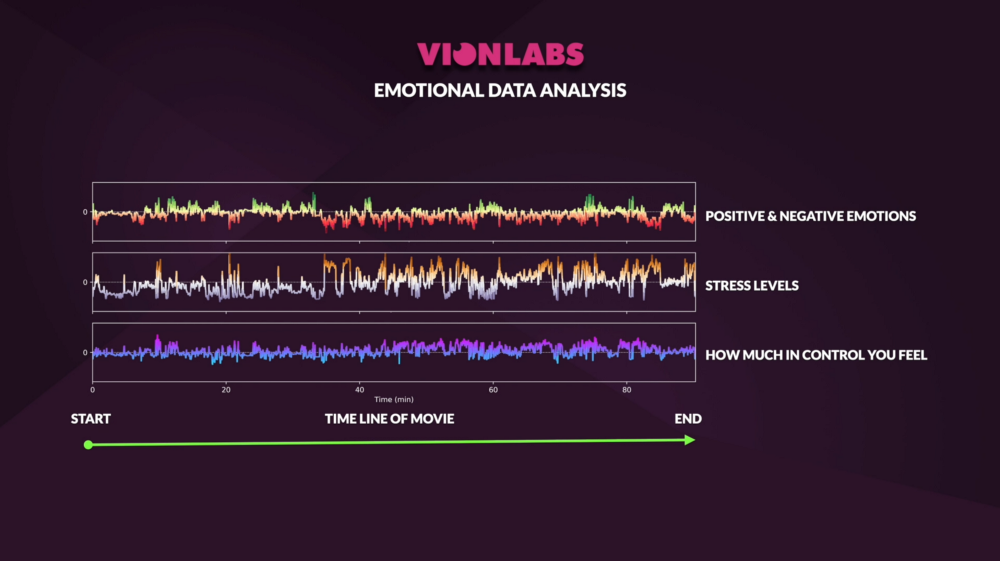
Vionlabs Emotional Data Analysis for Streaming Services
When we look at the emotional data comparison of The Silence and A Quiet Place, we can see that there are things that are similar, but there are some main key differences.
Build-up
The first major difference is seen in the build-up of these two movies. We can spot the difference by looking closely at the stress levels displayed in our data. The difference between the two films is that A Quiet Place has a clear build-up. The first half of the film is actually quite calm. Slowly, there is a build-up of tension and stress that eventually culminates in the second half of the movie.
The Silence on the other hand has a pretty even distribution of high stress levels throughout the duration of the story, except for a calmer dip at the end. By slowly building up the tension we are given more time to calmly get to know our characters and because of this we care more what happens to them when shit hits the fan.
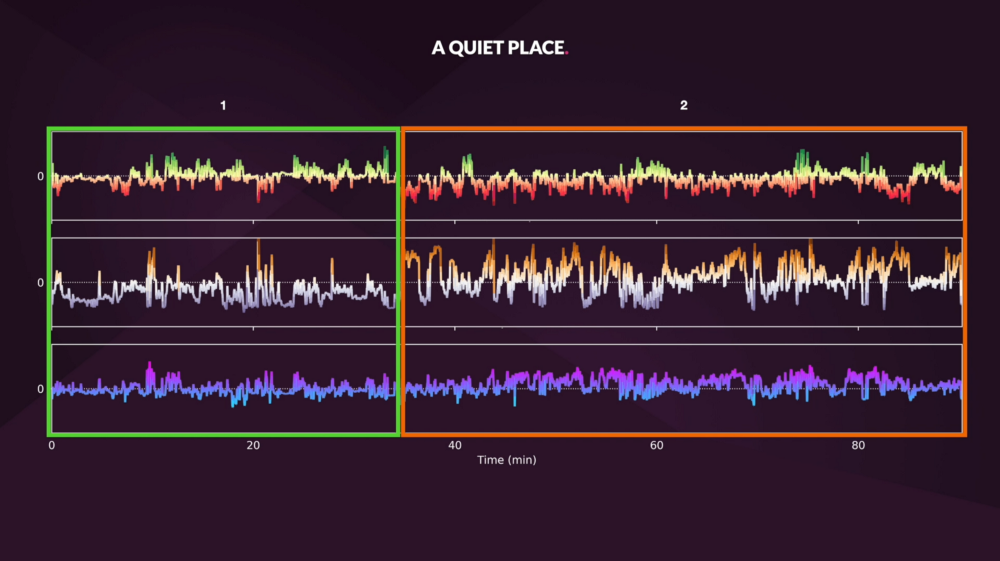
Variation
Secondly, the data from A Quiet Place also showcase a bigger variation in their positive or negative feelings, stress levels, as well as how in control you feel during certain scenes. Naturally, a lot of these variations are caused by sound design. So, why is this important?
Well, horror films have long used their sound design to elicit fear in their viewers. As humans, we are used to there always being sound around us. Even in a silent room, there is some kind of ambiance, so the idea of no sound is scary. But not surprisingly, it’s the healthy balance between both silence and loudness that enables horror movies to create tension and suspense. The silence makes the sound even more surprising and loud, and the loudness makes us wonder what horrifying things hide in the silence.
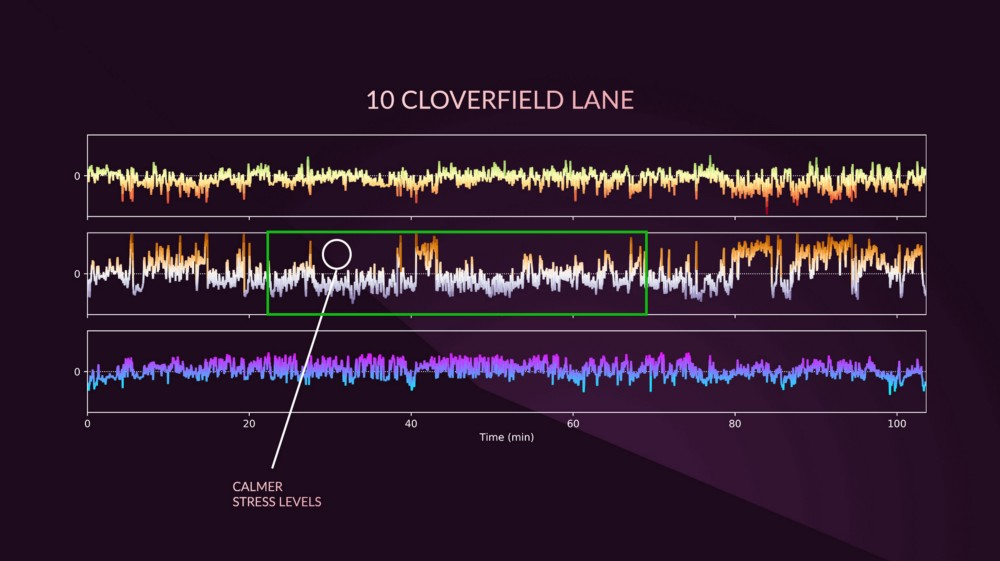
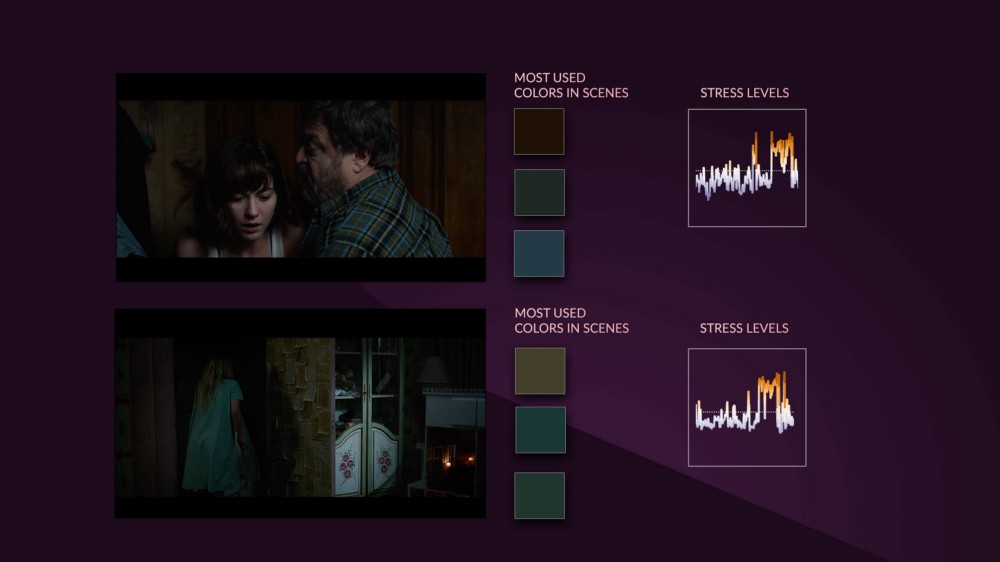
There is a scene in A Quiet Place where the father of the family, Lee, and his son Marcus are returning from a trip to get food. While walking home, they encounter an old man who has just lost someone close to him. There is a moment of tension-filled silence as the father and his son lock eyes with the old man before them. While completely silent, Lee’s eyes still seem to say “don’t do it”, and because of this pleading moment of silence, when the old man finally screams, it is ear-piercing. You feel the shock all throughout your body.
By creating a story with more variation, viewers do not necessarily know what to expect, they are holding their breath, waiting for the next moment. The sound design ultimately becomes the differentiating factor that makes A Quiet Place a more immersive and scary film experience.
Vionlabs Emotional Data Analysis for Streaming Services – Silence
The third way these films differ is through the actual use of silence. We’ve already established that silence juxtaposed with loudness is a major contributor to both immersion and the creation of tension. So why does A Quiet Place do better than The Silence here? A Quiet Place is just simply more silent. In fact, the sound designers have managed to create something very unusual.
Movie silences are often filled with music, sound effects and ambiance, but three times in the movie, noticeable in the analysis at three different data points, the sound designers deprive us of sound entirely. It is in these moments that we truly get to experience the isolated feelings of the daughter Regan. We feel her despair of not being able to hear the creatures that haunt them, and somehow these silences become the most intimate moments of the film. Thus, silence is used in such a way that makes us feel for the main characters of the story.
More movie analyses:
How The Movie ‘Midsommar’ is Creepy Despite Not Being Dark
How Sound Design Triggers Emotion
1. What is Vionlabs’ Emotional Data Analysis? Vionlabs’ Emotional Data Analysis leverages advanced machine learning trained with human input to predict emotional responses to video content. It processes a variety of variables like stress levels and emotional tones, providing detailed insights that help streaming services understand the emotional impact of scenes more accurately.
2. How does Emotional Data Analysis improve streaming service recommendations? Emotional Data Analysis by Vionlabs enhances recommendation algorithms by going beyond traditional metadata. By understanding the emotional journey of each movie or show, streaming platforms can match content more accurately to viewer preferences and moods, significantly enhancing user satisfaction and engagement.
3. Why is emotional data crucial for content recommendation algorithms? Emotional data is crucial because it captures subtleties in content that traditional metadata overlooks, such as the intensity of a scene or the emotional arcs of characters. This data allows for nuanced content recommendations that resonate more deeply with viewers, leading to a more personalized and satisfying viewing experience.
4. Can Vionlabs’ technology differentiate similar movies effectively? Yes, Vionlabs’ technology can differentiate between movies that appear similar by traditional metrics but vary significantly in emotional impact. By analyzing detailed emotional data, Vionlabs can highlight distinct emotional profiles and recommend content that truly aligns with the viewer’s emotional state and preferences.
5. What makes Vionlabs’ approach to content analysis unique? Vionlabs’ approach is unique because it incorporates emotional intelligence into content analysis. By focusing on emotional data points like stress, joy, and anticipation, Vionlabs provides a deeper understanding of content, which traditional analysis methods based on genre or plot summaries cannot offer.
6. How does Vionlabs’ Emotional Data Analysis impact viewer engagement? Vionlabs’ Emotional Data Analysis impacts viewer engagement by enabling streaming services to offer highly targeted content recommendations that meet viewers’ current emotional needs and preferences. This tailored approach reduces content search time and increases viewer satisfaction, leading to higher engagement rates and prolonged platform use.
